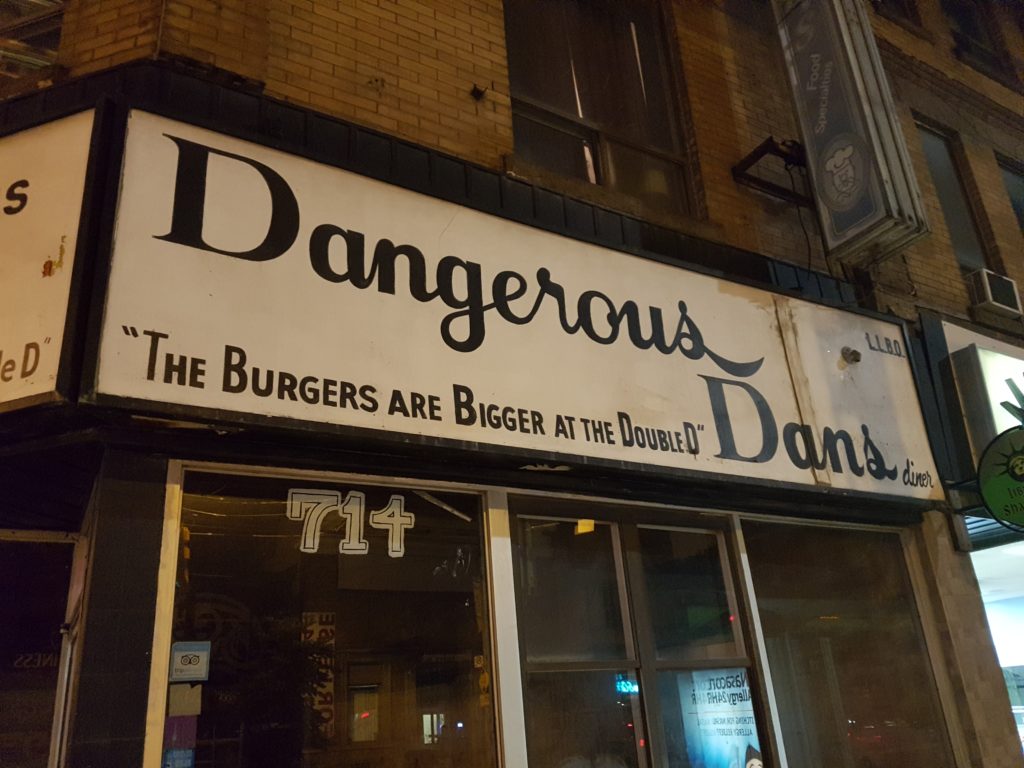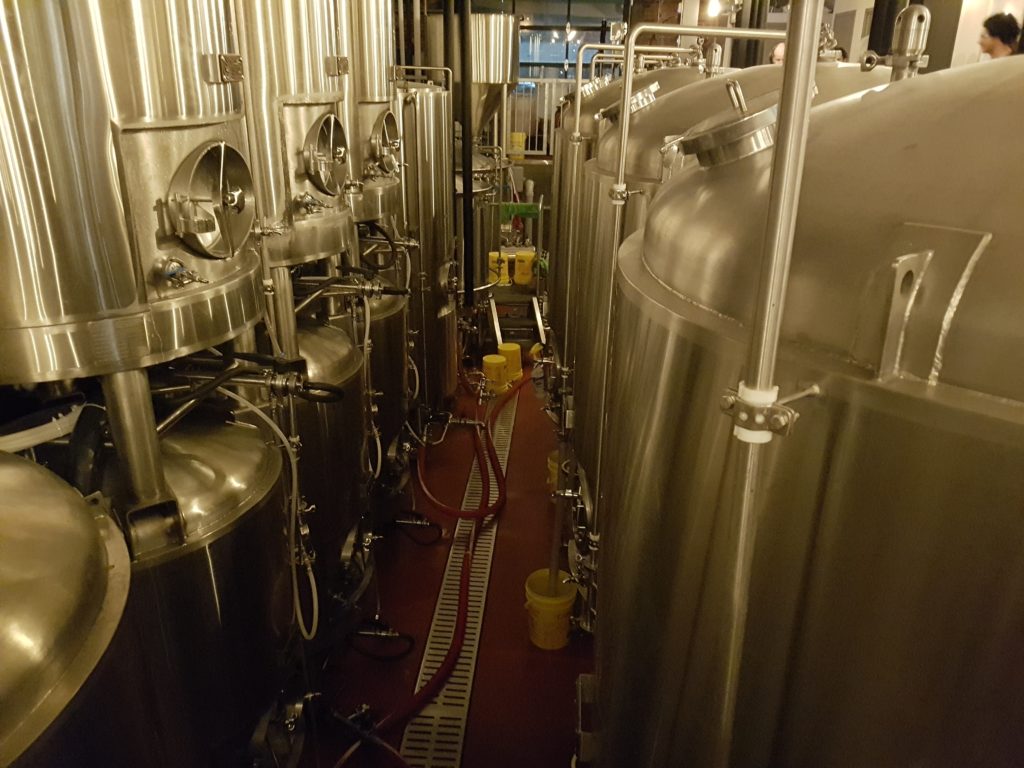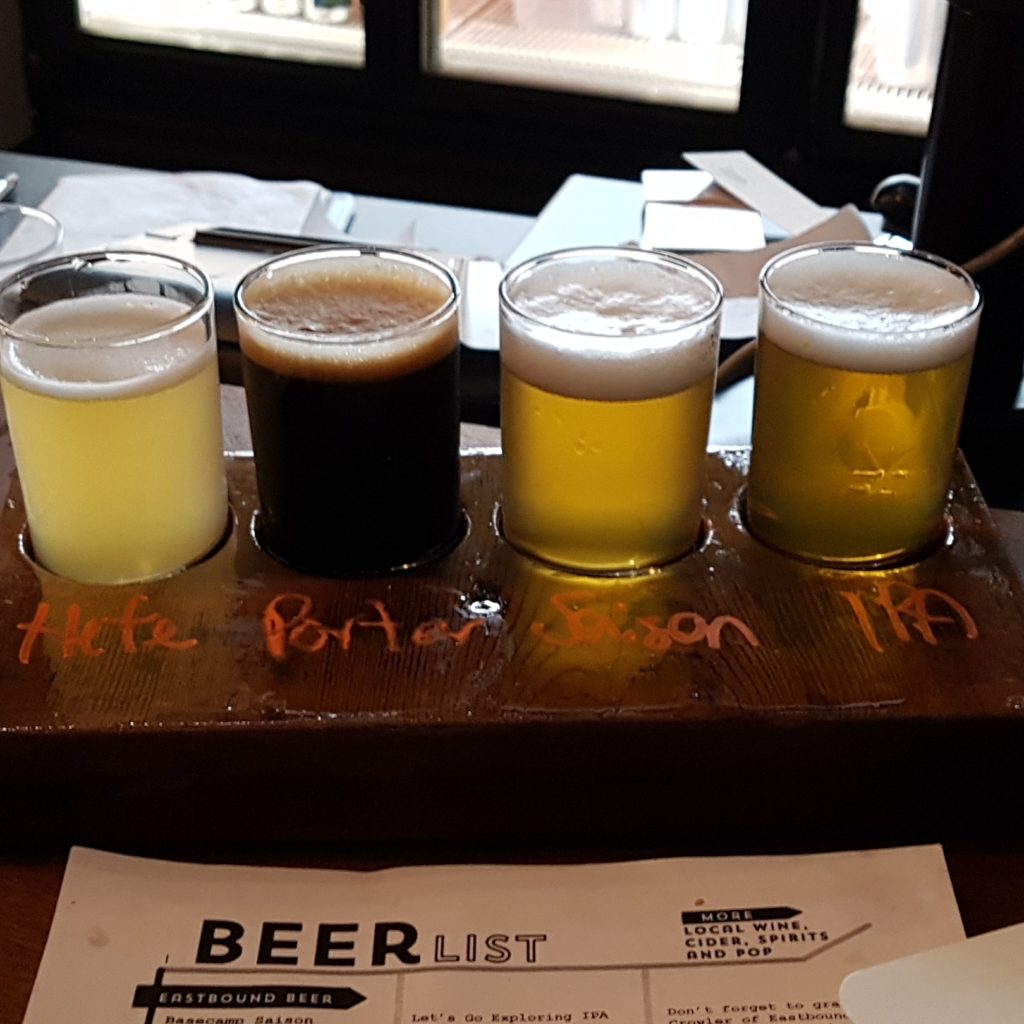The benefit of walking everywhere is that it does set you up with some context for the thing that you’re about to see. In the case of Toronto, that means that you’re going to see cranes in the sky and streetscapes mostly made up of advertising boards proffering suites from the high 200’s. This is Regent Park I’m talking about and the change in that neighbourhood is remarkable. Newly constructed condo buildings with Mondrian accents feel as though they may as well be on another planet despite the juxtaposition with the low rise red brick projects a block north; the best the city could do after the second world war. Ten years ago I would have been leery about walking through at night but now I mostly wonder where all the people who used to live there landed.
Gentrification is something of a mixed blessing. Of course it’s good for the property value if that’s what you’re interested in and since you live in Toronto, I’m guessing it is second in terms of constant preoccupation just behind the Trumpian soap opera playing out to the south. Crossing that muddy brown ribbon of the Don (which receives no improvements because you can’t put a coffee shop in it) and heading down Broadview I was a little shocked to see that the Broadview hotel has windows on the main floor now.
A brewer friend of mine once referred to Jilly’s as “Hell’s Waiting Room,” a sentiment that denoted not only the tawdry rumpus enacted nightly but also the age of the participants. Where did those strippers go? Probably Filmores which I had walked past earlier and which boasted “free lapdances for any Blue Jay with a .300 average” on its marquee. Dangerous Dan’s has clogged its last artery and the An Sibin Irish Pub didn’t even get a wake. What a marvel of rebranding the Riverside neighbourhood is, just vibrant enough in connotation to have driven out three of four corners in a short space of time. I felt a pang of compassion for the Starbank Convenience store which will almost certainly be a Sobey’s Urban Fresh by Thanksgiving.

“Dangerous Dan met his match one day when the condo developers came to play. They didn’t bring pistols or axes or knives, they only brought promises of better lives.” – The Ballad of Dangerous Dan’s.
What I’m saying, I guess, is that in such a neighbourhood there absolutely must be a craft brewery. If Eastbound Brewing did not exist, you would have to invent it.
It is lucky, then, that plans to build it predated the necessity for it and that the people involved are uniformly talented. David Lee, the brewer, is ex-Mill Street and ex-Kensington, the latter of which is scheduled finally to open later this summer. Tara Lee worked under Mark Cutrara at BarHop, which is as good a pedigree for pub food as you could hope to have in the city. Adam Stiles, local meteorologist and one-time beer reviewer is amongst the owners and he brings with him a certain amount of expertise. It is always good to have everybody on the same page.
The space is tastefully appointed and needs to be, as next door people are lining up on a Tuesday night to get into the bar at the Broadview Hotel. The vibe is different. If the Broadview Hotel calls to mind a Parisian café, then Eastbound is straight postmodern industrial space alternating wood texture with blocks of red brick and white tile. The high ceilings create a sense of depth from the street and the long galley kitchen is on display to the patrons, an exercise in transparency of which I think we all approve. From the door, you could be forgiven for thinking that they weren’t a brewery at all with the equipment located in a pit at the back with just domes of the tallest fermenters visible.
The fermenters seem to be set up for single and double batches, and before too very much longer I suspect they will do away with the guest taps that make up about half of the bar list. When I walked in around 9:15, they were rocked solid and I suspect that would continue to be the case even if they did not have beer. The neighbourhood caters in terms of establishments to tonal shift, and that is just about right for that Riverside demographic. Out of college and starting out together and a different version of yourself every night of the week from Hi-Lo to Boots & Bourbon to Ruby Watchco and Boxcar Social. The key there is the moderate affluence that affords that experience. The text of the standee on the bar advertising crowlers claims you can take the beer where glass can’t go. Throw a couple in your bag and you’re ready for the cottage. The cottage playset is assumed.
The beer is finally ready. The launch was on Saturday and the balloons still line the entrance. For a couple of months it was all guest taps, but now there are five house made beers. It is always touch and go reviewing beer directly out of the gate. With new equipment in a new space no one is turning out their best work. On the book, I’d give them six months, but this is just Tuesday night’s entertainment.
The most successful of their beers are the Saison and the IPA. The Basecamp Saison produces a light apple ester on the nose with a touch of clove and sultana. The carbonation is vibrant, the body is light enough that for a moment I’m suspecting corn, but that’s crazy talk. There’s a touch of white pepper and citrus pith in the tail and the bitterness and dry body work together to stretch something like plum out of the mid palate to the lengthy finish. All of these beers seem to have a long finish.
The Let’s Go Exploring Juicy IPA is brewed with oats for body and aroma retention. The first note is celery leaf before it dives into the tropics. Papaya, passion fruit, grapefruit, lychee, and a touch of a deep green something that might as well be wintergreen. The bitterness is high for the current trend in Juicy IPA. Being an outlier is not a bad thing, necessarily, as some people will enjoy that punch. As it warms there’s a hint of red apple ester and the faintest suggestion of diacetyl.
Less successful are the Hidden Lake Hefeweizen, the aroma of which does not really call to mind classic versions of the style; Somewhat soapy and somewhat sour. Skipping Through the Dark Porter is nearly tantric in that it takes just about forever to finish. The body is thin and the suggestion of brown malt, chocolate, and molasses in small measure are constrained by persistent lingering roast. Some sweetness here would do wonders for balance. The Fresh Start APA seemed to me to have at least rivaled the IPA for bitterness, although the straightforward west coast pine and citrus character is familiar if heavy for style.
It seems appropriate that the brewery intends to try on many different styles. Their customers from the neighbourhood will be trying on different lives and they will all grow together. The quality of the beers will improve with experience on the system (as happens everywhere) and that will be the final piece of the puzzle. If the Saison and IPA are an indication, the beer will be very good. The space, the clientele, the food are all ready to go. In fact, as I taste through my flight, the couple next to me are drinking gin and tonics. The unsettling thought occurs to me that there is an element of tokenism here. That the neighbourhood needs a craft brewery as a status symbol rather than for the explicit enjoyment of the product. “It’s Tuesday; let’s try the craft beer lifestyle.”
Waiting for the streetcar, I pop my head into Boxcar Social. They have a new house beer at the Boxcars Social called Versus Lager. It is a contract brewed Pilsner that will be sold through the chain. It has more copper than a ship bottom because it is brewed out of Stratford. I talk to the owner of the brand who has spent the first two contract batches learning that his might be harder than originally envisioned. It’s important to try things on.

